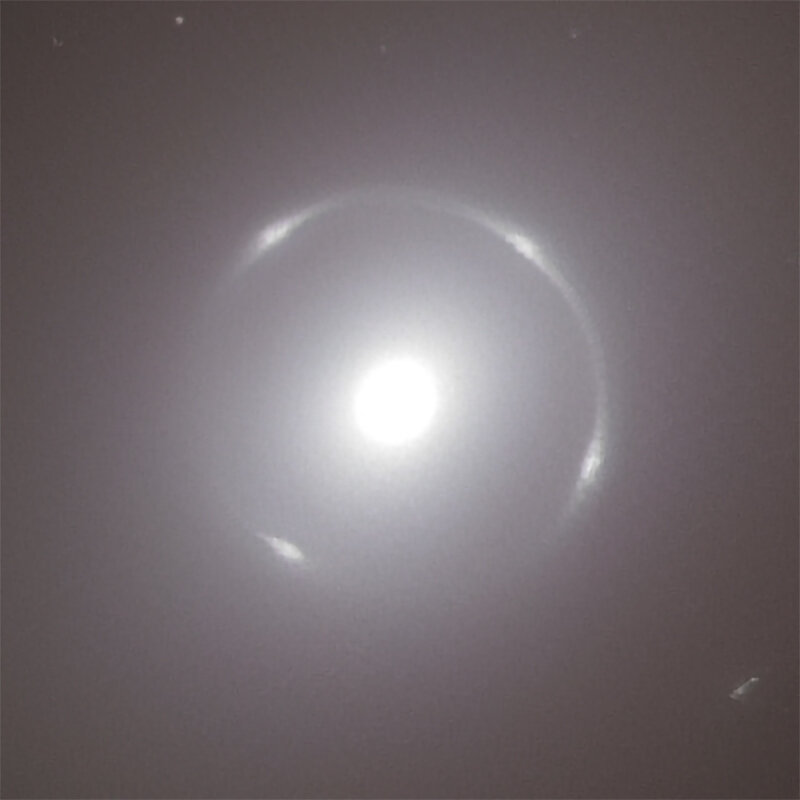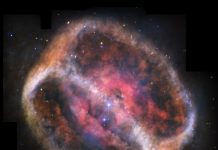
Euclid, the ESA’s dark Universe detective, has made a stunning early discovery: a near-perfect Einstein ring. This rare phenomenon, caused by gravitational lensing, was found surrounding galaxy NGC 6505, showcasing Euclid’s power and hinting at the wealth of cosmic secrets it will uncover
The European Space Agency’s Euclid spacecraft, designed to unravel the mysteries of the dark Universe, has made a remarkable discovery even before beginning its main survey. During the initial testing phase, Euclid captured an image revealing a near-perfect Einstein ring, a rare and visually stunning phenomenon caused by gravitational lensing.
This unexpected find highlights Euclid’s exceptional capabilities and offers a tantalising glimpse into the wealth of information it promises to uncover.
Gravitational lensing creates a cosmic surprise
Euclid’s mission, launched in July 2023, focuses on mapping a vast portion of the sky to study the expansion of the Universe and the nature of dark matter and energy. However, before commencing its primary survey, the mission team conducted essential tests to ensure the spacecraft’s instruments were functioning correctly.
During this period, in September 2023, Euclid captured images, initially out of focus, that would lead to this extraordinary discovery. While reviewing the incoming data, Euclid Archive Scientist Bruno Altieri noticed a hint of something unusual. Further observations confirmed his suspicions: Euclid had captured an image of a breathtaking Einstein ring.

Unveiling NGC 6505
The Einstein ring was found surrounding the galaxy NGC 6505, located a relatively close 590 million light-years from Earth. While NGC 6505 has been known to astronomers since 1884, the Einstein ring itself had never been observed until Euclid’s high-resolution instruments captured it.
The ring is formed by the light from a much more distant galaxy, 4.42 billion light-years away, whose light has been warped and magnified by the gravity of NGC 6505. This background galaxy, previously unknown, is now a subject of intense scientific interest.
The science behind the spectacle
Einstein rings are a dramatic manifestation of strong gravitational lensing, a phenomenon predicted by Albert Einstein’s general theory of relativity. Massive objects, like galaxies and galaxy clusters, warp spacetime, causing light passing nearby to bend.
When the alignment between a distant light source, a massive foreground object, and the observer is nearly perfect, the light from the source is bent into a ring around the foreground object. This effect is magnified by the mass of the lensing object, making it possible to observe galaxies that would otherwise be too faint to detect.
A treasure trove of information
Einstein rings are more than just beautiful cosmic spectacles; they are valuable tools for scientific research. By studying the distortions of light in these rings, astronomers can probe the distribution of matter, including dark matter, in the lensing galaxy. They can also investigate the properties of the distant source galaxy, providing insights into galaxy formation and evolution in the early Universe. Furthermore, the study of gravitational lensing contributes to our understanding of the expansion of the Universe and the nature of dark energy.
A promising start for Euclid
The discovery of this stunning Einstein ring so early in Euclid’s mission is a testament to the spacecraft’s capabilities and a harbinger of the exciting discoveries to come. Euclid is expected to detect around 100,000 strong gravitational lenses during its six-year mission, significantly increasing the number of known lenses and providing a wealth of data for cosmological studies.
While finding such a spectacular and nearby Einstein ring is a remarkable stroke of luck, Euclid’s primary objective is to study the much more subtle effects of weak gravitational lensing, which requires the analysis of billions of galaxies.
Revolutionising cosmology
Euclid’s comprehensive survey of the sky will create the most detailed 3D map of the Universe yet, allowing scientists to trace the evolution of cosmic structures and investigate the role of gravity, dark matter, and dark energy in shaping the Universe we see today. The discovery of this Einstein ring, so early in the mission, underscores Euclid’s potential to revolutionise our understanding of the cosmos and unlock the secrets of the dark Universe.
Euclid is going to revolutionise the field
As Conor O’Riordan, lead author of the first scientific paper analysing the ring, notes, “Euclid is going to revolutionise the field, with all this data we’ve never had before.”










